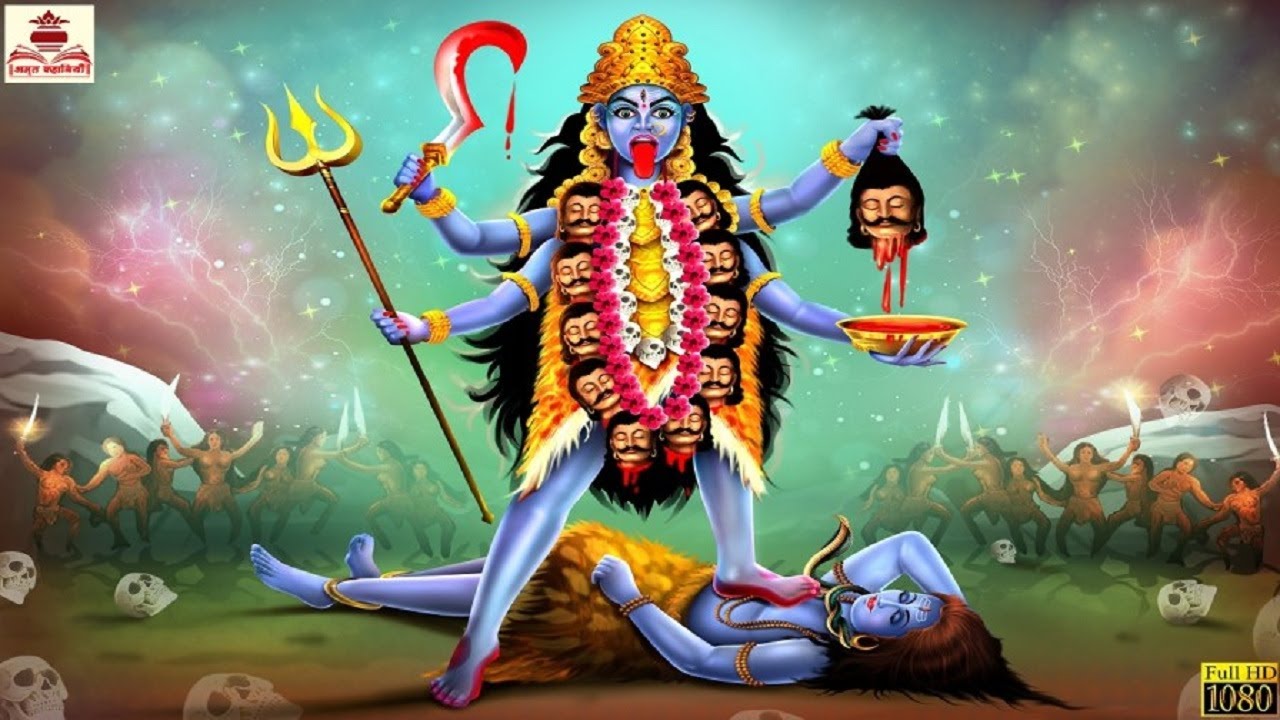Vijayadashami 2024 | commonly known as Dussehra | Story of Maa Kali
Story of Maa Kali
The Hindu goddess Kali has many stories associated with her, including her origin, her role in defeating the demon Raktabija, and her role as a goddess of creation:

- OriginIn one version of her origin story, Shiva asks Parvati to defeat a demon that only a female can kill. Parvati merges with Shiva and emerges as Kali, who kills the demon. However, Kali’s bloodlust is out of control, and only Shiva can calm her to prevent her from destroying the world.
- Defeating RaktabijaKali is most well known for her role in defeating the demon Raktabija. Every time Raktabija’s blood touched the earth, it spawned another demon. Kali cut off his head and drank his blood, ensuring that no more demons could threaten the world.
- Goddess of creationKali is also viewed as a goddess of creation. She embodies a complex duality, representing both humanity’s dark and light, and the good and the evil. She is worshipped by artists for inspiration, and sought out by expectant and new mothers for fertility.
Maa Kali, one of the most revered deities in Hinduism, embodies the fierce and transformative aspects of the divine feminine. Here’s a brief overview of her story and significance:
Origins and Symbolism
- Creation: Kali is often depicted as a black or dark goddess, symbolizing the transformative power of destruction and rebirth. She emerged from the forehead of Goddess Durga during a fierce battle against the buffalo demon Mahishasura, who represented ignorance and evil.
- Battle with Demons: In this battle, Durga fought fiercely against various demons, and as the conflict intensified, Kali was born to consume the demons that were overwhelming Durga. Her ferocity and fearlessness made her a powerful force against evil.
Iconography
- Appearance: Kali is typically depicted with dark skin, multiple arms, and a necklace of skulls. She holds weapons in her hands and often stands on the defeated body of Lord Shiva, symbolizing the balance of creation and destruction.
- Representation of Time: Kali is also seen as the goddess of time (Kala) and change. Her name “Kali” is derived from “Kaal,” meaning time, highlighting her role in the cycle of creation and dissolution.
Legends and Worship
- Kali and Shiva: One of the famous stories involves Kali’s fierce nature leading to her uncontrollable destruction. To calm her, Lord Shiva lay down in her path, and upon realizing it was him, she paused, illustrating the relationship between creation and destruction.
- Devotion and Festivals: Kali is worshipped in various forms across India, especially in West Bengal. The festival of Kali Puja, celebrated on the new moon night in October or November, is marked by elaborate rituals, offerings, and festivities.
- Motherly Aspect: Despite her fierce appearance, Kali is also seen as a loving mother who protects her devotees from harm and ignorance, symbolizing the duality of nurturing and destruction.
Spiritual Significance
Maa Kali teaches that destruction is often necessary for new beginnings. She embodies empowerment, reminding devotees of the strength and resilience that lies within, encouraging them to confront their fears and overcome obstacles.
Her stories and teachings continue to inspire countless devotees, emphasizing the balance of power, compassion, and the transformative nature of life.

